Up Next

Mercedes and Red Bull – Lewis Hamilton and Max Verstappen – arrive at Baku at a fascinating point in their ongoing struggle for the 2021 world championship.
The respective traits of their cars are very different, the punches and counter-punches each have inflicted on the other are making for a great ongoing storyline, and this weekend’s venue invariably delivers one of the most unpredictable events of the season.
“So far it’s never been in my favour here,” Verstappen laughed on Thursday. “It’s not that you look forward to drama. It’s just you know that a lot of things can happen around here, there’s always a lot of action, at a restart or whatever.
“You just have to try and make sure that you’re on top of it.”
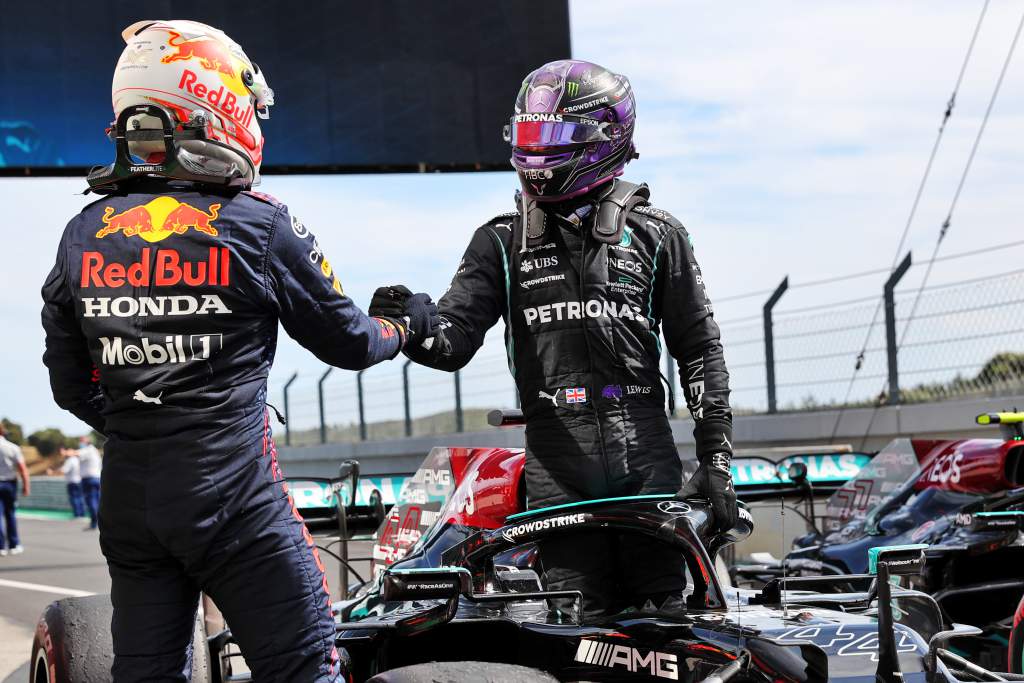
Hamilton and Verstappen are each at the height of their powers and driving superbly. But each has put the other under pressure and both have made crucial errors. Any differences between their personal performance levels are very small.
The deciders this weekend are much more likely to be about how the traits of their cars dovetail with the specific challenges of this contrastive circuit and how well their teams react to the challenges in the field of battle.
THE TECHNICAL BATTLEGROUND
From the races so far it seems clear that, other things such as wing choice being equal, the Mercedes carries less drag than the Red Bull. This is just inherent to the contrasting low- and high-rake concepts of the two cars. As is the Red Bull’s generally superior performance in slow corners.
Oddly, the Baku track prioritises both low drag and slow-speed corner performance! If you set the car up to favour that Monaco-like middle sector through the old town, the drag induced by that downforce along that long Caspian straight will eat away much or all of what you’ve just gained through that tight middle sector.
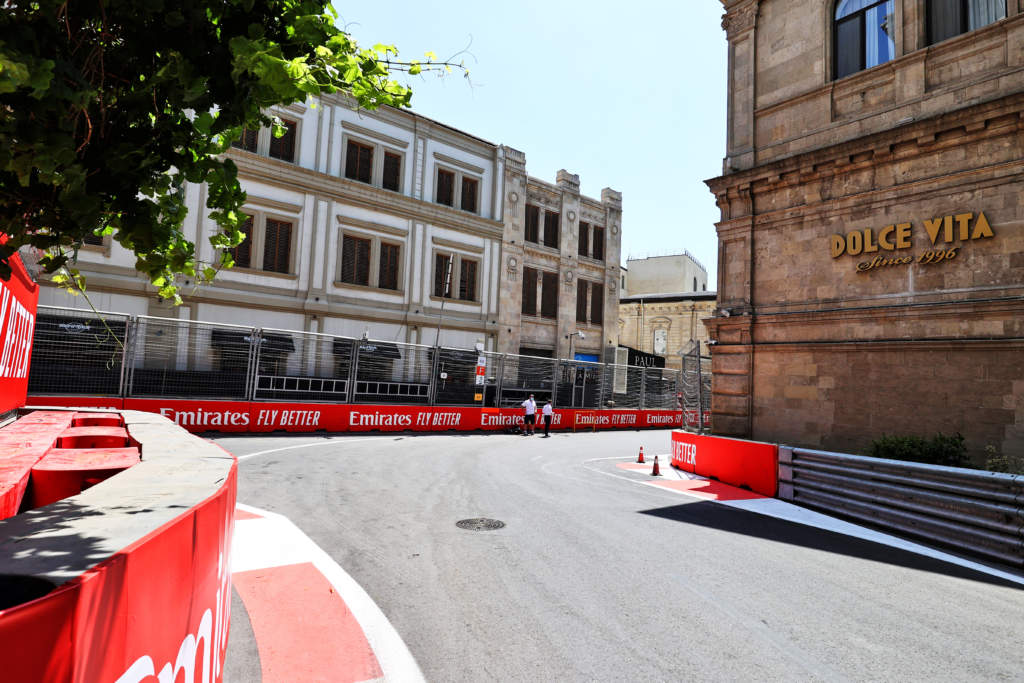
Hence both approaches to wing level are valid here and give very closely-matched laptimes.
Historically Mercedes has tended to favour quite a high level of downforce and relied upon its power and deployment advantage to keep it competitive down that long stretch of flat-out running.
But its power advantage over the Honda is now small and it may no longer have a deployment advantage – which is one of the big technical questions ahead of this event.
Red Bull has traditionally run this race with a power shortfall and so has tended to favour a low-downforce set-up. Maybe not anymore, now that it has plenty of Honda horsepower and possibly a deployment advantage.
Baku and Spa are the two tracks that are too long to have deployment on demand even over a single lap. Even fully charged at the beginning of a lap, the power unit will need to harvest in places. Getting the optimum balance between the two states – where to deploy and where to harvest for the best lap time – is crucial in qualifying.
But things get even more complicated in the race when it’s no longer about just one lap. You can only defend for so long with the battery deployment here. It empties quickly. The optimum deployment points can be very different to those of qualifying.
In Barcelona, on race day the Honda seemed to be deploying further down the straight than the Mercedes. Was that an inherent advantage or a set-up trait? The much tougher workout Baku gives of the ERS system should give us a clearer answer on that.
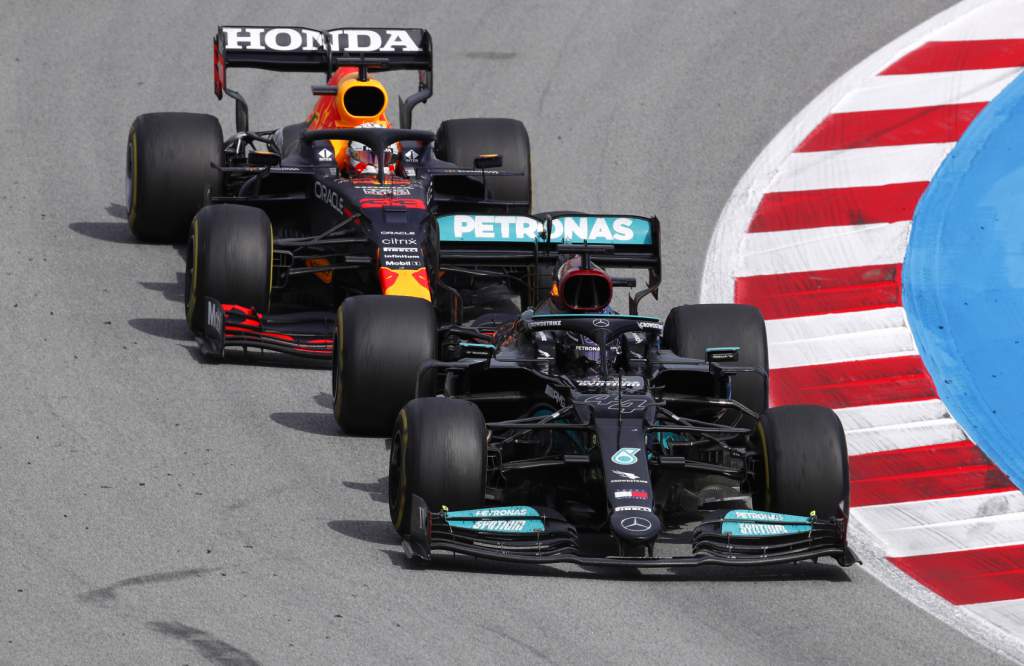
The complication, especially for Red Bull, is that the drag level is working against the deployment – i.e. the deployment will give more benefit on a lower drag car. So, this could further impact upon the chosen wing level.
The temptation for Red Bull to use its controversial ‘flexi’ wing is clear. It would be the lower-downforce alternative of the two feasible wings here, but its aero efficiency would undoubtedly be greater. Given that the high-rake Red Bull inherently lacks the Mercedes’ aero-efficiency, that could be a very valuable trait indeed.
But the choice of wing level is only partly to do with the trade-off between sectors 2 and 3. It also has an impact upon tyre performance.
In 2016 the low-downforce Red Bull of Daniel Ricciardo qualified on the front row but was in the pits after just five laps, his rear tyres overheated and useless.
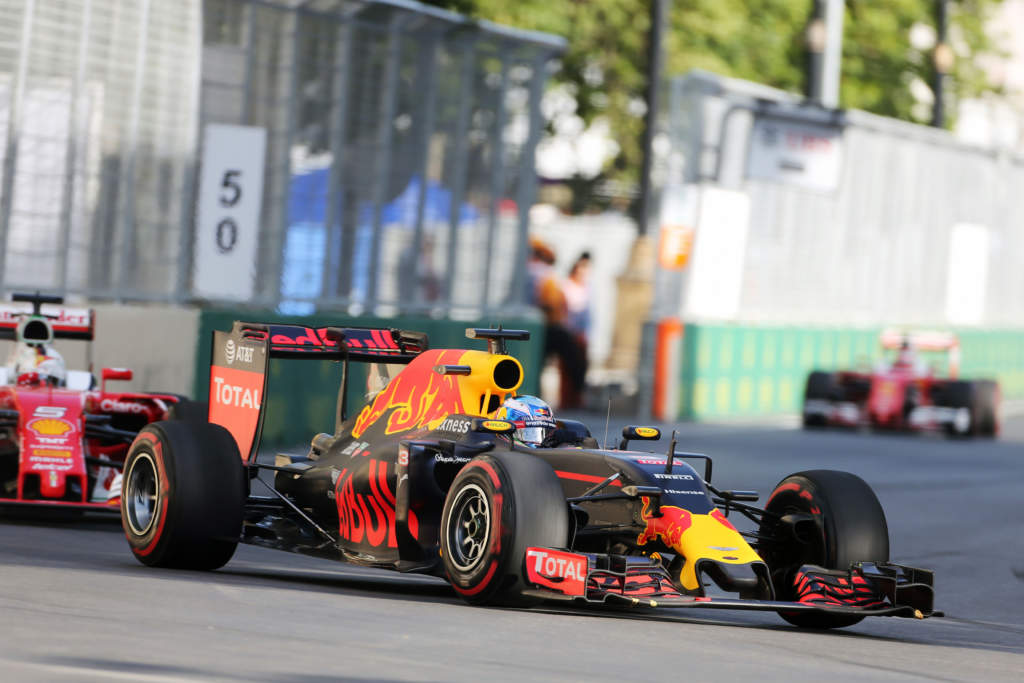
It can happen here. Keep your tyres in shape, and the degradation rate is low. But the temperatures can get out of control quickly with a low-wing set-up that has the rear sliding.
Recall that at Barcelona Red Bull could not find an adequate window between protecting its tyres and having good enough end-of-straight speed to protect their positions. That too could play very much into Red Bull’s wing choice here.
As for Mercedes, the kind-to-its-tyres trait that has served it so well at many races this season but hurt it (and particularly Hamilton) so badly in Monaco will be a key factor. It could be a blessing in the race but there is a penalty to not having the tyres switched on quickly enough in qualifying, as Hamilton discovered in 2019 when he was beaten to pole by Valtteri Bottas.
THE OPERATIONAL BATTLEGROUND
Pre-planned race strategies can often be rendered junk here, such is the high incidence of safety cars. Where you are when the almost inevitable safety car is triggered and how that impacts upon your race, good or bad, can be down to plain dumb luck.
The challenge for the teams becomes about maximising the window of opportunity and in how they react on the hoof to developments.
Mercedes has looked the sharper of the two teams in head-to-head fights this season, even if it did get caught out in Monaco to the ire of its world champion.
But Red Bull team principal Christian Horner has issued a fairly punchy dig at “suggestions in the press that the team had lost some of its championship sharpness”, stating that Verstappen’s Monaco win has changed that narrative.
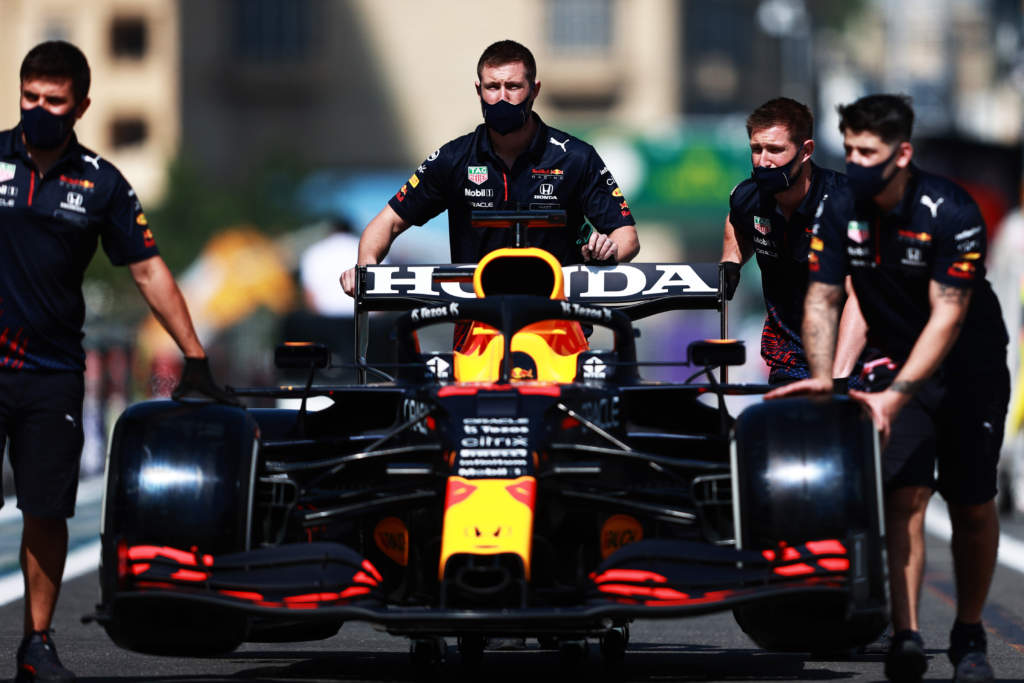
“We have been right there and fortune and bad luck always equals itself out over the course of a season, that’s just the nature of sport and you have to take the rough with the smooth,” he reckons.
“The business we operate in is a media business and headlines are there to keep the sport as entertaining as possible but they are not always 100% accurate.”
Horner’s confidence in Red Bull’s operations will be put to the test in Baku, where maximising stint lengths gives the best protection against a safety car but makes you vulnerable to the undercut.
Then again, the undercut doesn’t always work here. There can be a problem getting the new tyres switched on for the out-lap. This seems to be a much bigger hazard for Mercedes this year than Red Bull.
The other key operational aspect of this weekend – something which can absolutely be the difference between success or failure – is coordinating a good tow down that long straight at the end of the lap.
“You need to have a bit of luck to get that tow to the line,” says Verstappen. “It’s really hard to plan, most of the times you try to plan it, it fails.
“It’s better to just try and do the best lap you can and normally that should be a good enough lap to be more or less where we should be.”
But that might be a luxury he cannot afford. The tow can be worth as much as 0.45s here. The Mercedes and Red Bull are far too closely matched to be casually throwing 0.45s away. But it’s a super tricky thing to coordinate.
Mercedes pulled a masterstroke here in 2019 by pulling into the practice start lane after leaving the pits – denying the following Sebastian Vettel his planned tow from them. On that occasion, Bottas gained 0.3s from a tow (from Lando Norris) on his way to pole. Vettel, without a tow, missed pole by 0.2s.
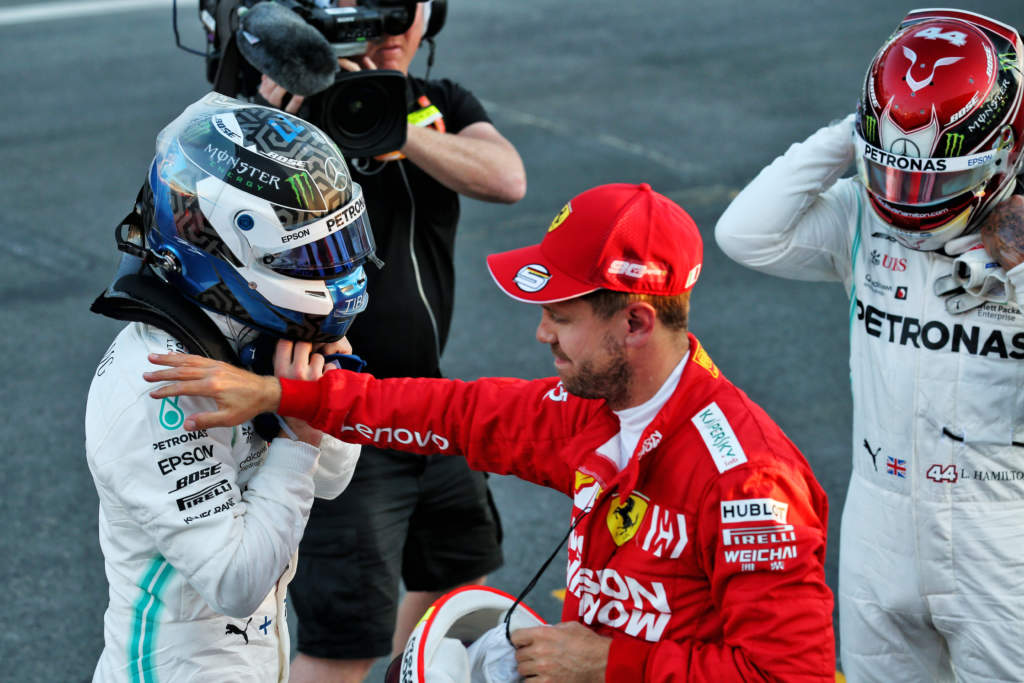
Hamilton got some benefit from a Bottas tow to go second but, as mentioned earlier, was compromised early in the lap by not having his tyres up to temperature, illustrating the difficulty of perfectly co-ordinating the tow.
This further underlines the vital parts to be played this weekend by Bottas and Sergio Perez as the de-facto support drivers.
Now that there are other cars around fast enough to steal a grid place off an under-performing Mercedes or Red Bull, they are under even more pressure than usual to deliver.
The pressure is on too for the pit crews – and no-one needs to remind Mercedes of this off the back of Bottas’ drama at Monaco.
“It was one of my concerns that I’d raised to the team already a few weeks ago,” Bottas revealed ahead of the Baku weekend.
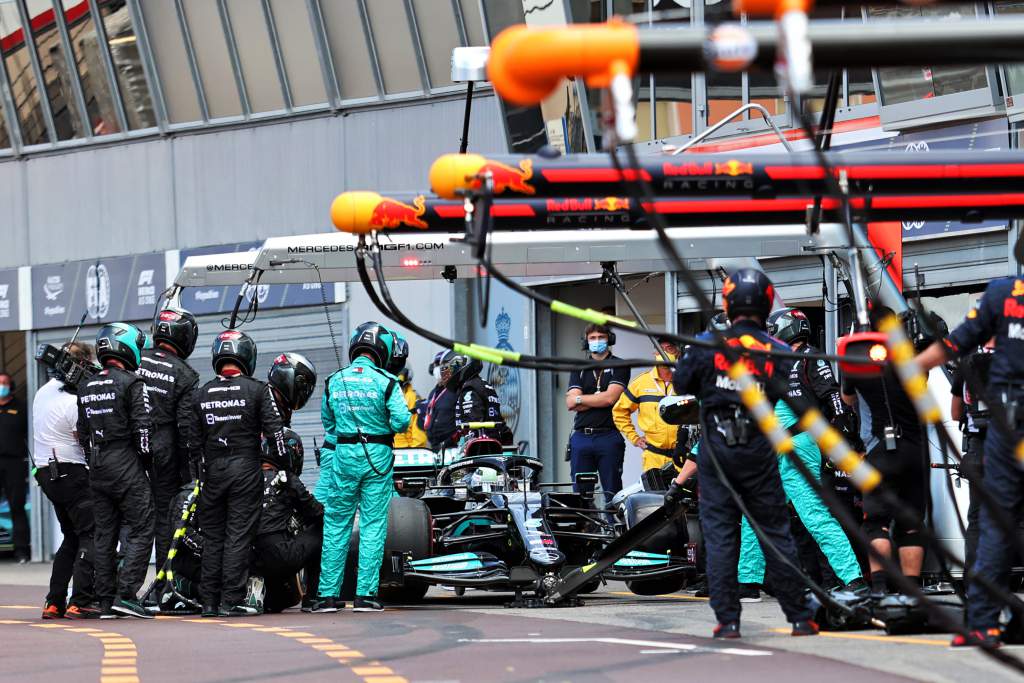
“It didn’t come from somewhere out of the blue. We knew that we are not perfect in pitstops and also other areas like tyre warm-up in qualifying. I knew that it was going to be an issue and it was one of the things that I highlighted much, much before the weekend.”
In general, Red Bull has comprehensively out-performed Mercedes in the speed of its pitstops for the last couple of seasons.
That didn’t matter so much when the Mercedes was so much faster. But it absolutely does matter now. Red Bull has devoted a lot of attention and expense to this and its superior equipment is very much part of the advantage.
Mercedes, having focussed on the car, is behind in this area – and is now hard-up against the cost cap in trying to correct it.
It is one of the many marginal areas that could swing this weekend’s race in either team’s favour.







